How to Fix ‘accelerometerdll.DLL was not Found’ Error
Several Windows users have been reaching us with questions after they constantly get an error related to accelerometerdll.DLL. In most cases, the error that comes up is “The Code execution cannot proceed because accelerometerdll.DLL was not found”. Some users are encountering this error at every system startup while others see it when they try to open Microsoft Edge or a different 3rd party browser that uses accelerometerdll.DLL. The problem is confirmed to occur on Windows 7, Windows 8.1 and Windows 10.

What is Accelerometerdll.DLL?
Accelerometerdll.DLL is is a Dynamic Link Library file that is used by HP’s proprietary software 3D DriveGuard to protect your hard drive in situations where the laptop gets a knock or falls. In cases like this, the Accelerometer detects the movement and locks the read head of the hard drive while movement is detected.
Unless you fix the ‘accelerometerdll.DLL was not found’ error, it’s very likely that the feature will not work properly.
What is causing the ‘accelerometerdll.DLL was not found’ error?
We looked into this particular issue by analyzing various user reports and the repair strategies that are commonly being deployed to fix this particular error message. As it turns out, there multiple potential culprits that might be responsible for this error message:
- DriveGuard is not installed – If you’re encountering the issue on an HP laptop/notebook/ultrabook, chances are you’re seeing the issue because 3D DriveGuard is missing from your computer. In this case, the fix is simple – install the missing utility and restart your computer to resolve the issue for good.
- DriveGuard installation is corrupted – If you have the DriveGuard utility already installed on your computer, chances are the error message is occurring due to some degree of corruption since the installation folder. Several users in a similar situation have managed to resolve the issue by uninstalling the current DriveGuard installation and then re-installing the latest version available. But keep in mind that this method is only applicable if you’re using an HP computer.
- Incompatible Accelerometer driver – If your computer is recovering from migrating from an older Windows version to Windows 10, chances are the issue is occurring because your accelerometer driver is working with an incompatible driver. If this scenario is applicable, you should be able to resolve the issue by allowing Windows Update to install the correct driver.
- System file corruption – As it turns out, this particular issue can also occur due to some degree of system file corruption. If certain software components are affected, the accelerometer feature can break indefinitely. In this case, you can restore your computer to a healthy state using System Restore.
If you’re currently struggling to resolve the very same error message in one of the scenarios presented above, this article will provide you with several different troubleshooting strategies. Down below, you’ll discover a collection of methods that other users have successfully to resolve the ‘accelerometerdll.DLL was not found’ error.
If you want to remain as efficient as possible, follow the methods below in order and discard those suggestions that are not applicable to your particular scenario. You should eventually discover a fix that will resolve the issue regardless of the culprit that’s causing it.
Let’s begin!
Method 1: Installing DriveGuard (if applicable)
In the vast majority of cases, this particular issue occurs because an essential driver is missing from your computer. This is very common on HP computers and notebooks. A lot of affected users that we’re encountering the ‘accelerometerdll.DLL was not found’ error have managed to resolve the issue by installing a stable version of Driveguard and restarting their computer.
Note: If DriveGuard is already installed, move down directly to Method 2.
Here’s a quick guide on installing DriveGuard to ensure that your computer is not missing a needed driver:
- Visit this link (here) and download the latest version of DriveGuard.
- Once the download is complete, open the executable and follow the on-screen prompts to install DriveGuard on your computer.

Installing DriveGuard on your computer - When the installation is complete, restart your computer.
- Wait until the next startup sequence is complete, then repeat the action that was previously triggering the error.
If you’re still encountering the ‘accelerometerdll.DLL was not found’ error, move down to the next method below.
Method 2: Reinstalling 3D DriveGuard
If you already have a version of DriveGuard installed on your computer, chances are the issue is occurring because the DriveGuard installation folder has been tainted by corruption. We managed to identify several different occurrences where the ‘accelerometerdll.DLL was not found’ error was resolved after the affected users uninstalled their current DriveGuard version and installed the latest version available.
Here’s a quick guide on how to do this:
- Press Windows key + R to open up a Run dialog box. Then, type “appwiz.cpl” and press Enter to open up a Programs and Features window.
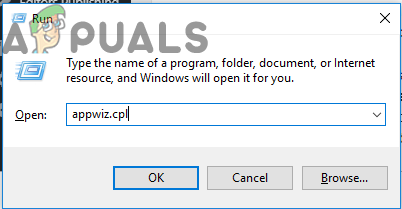
Typing in “appwiz.cpl” in the Run prompt - Once you’re inside the Programs and Features window, scroll down through the list of installed applications and right-click on your current DriveGuard installation. Then, choose Uninstall from the newly appeared context menu.

Uninstalling the DriveGuard application - Once the uninstallation is complete, restart your computer and wait until the next startup sequence is complete.
- When the next startup sequence is complete, visit this link (here) to download the latest version of DriveGuard.
- Once the installation executable is successfully downloaded, follow the on-screen prompts to install it on your computer, then perform another restart.

Installing the latest version of DriveGuard - At the next startup sequence, see if the issue has been resolved by repeating the action that was previously causing the ‘accelerometerdll.DLL was not found’ error.
If the same error message is still occurring, move down to the next method below.
Method 3: Install every pending update
As a couple of users have reported that they managed to resolve the issue by installing every pending update available for their Windows version. This is further evidence that the issue can also be caused by a driver incompatibility introduced with a Windows update.
Fortunately, if this scenario is applicable, you should be able to resolve the issue by bringing your OS version up to date by installing every pending update. Some users finding themselves in a similar situation have reported that the issue was resolved indefinitely after they performed the steps below.
Here’s what you need to do:
- Press Windows key + R to open up a Run dialog box. Then, type “ms-settings:windowsupdate” inside the text box and press Enter to open up the Windows Update tab of the Settings app.
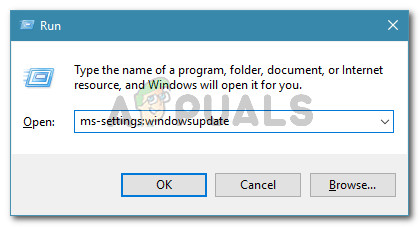
Run dialog: ms-settings:windowsupdate - Once you’re inside the Windows Update tab, click on in Check for Update and wait until the initial investigation is complete.
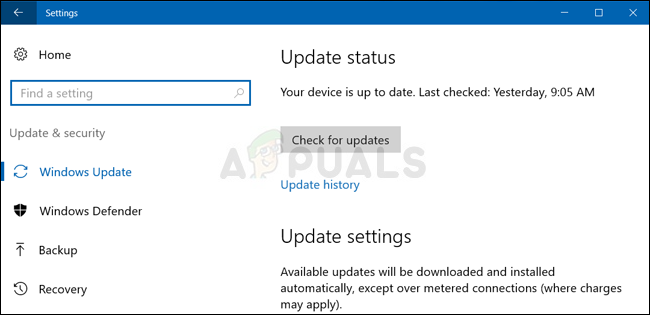
Check for updates on Windows 10 - Once you know exactly what updates are currently pending, follow the on-screen prompts to install every pending update.
Note: If you’re prompted to restart before every pending update is installed DO It, but make sure to return to the same screen and continue with the installation of the rest of the updates until you’re up to date. - When every pending update is installed, restart your computer and see if the issue is resolved once the next startup sequence is complete.
If the same accelerometerdll.DLL not found error is still occurring, move down to the next method below.
Method 4: Perform a system restore
If none of the methods above have allowed you to resolve the issue conventionally, it’s very likely that the issue is occurring due to some kind of system file corruption. In this case, you should be able to resolve the issue by using a system restore point to bring your computer to a previous point in time where this particular issue was not occurring.
Of course, this method will only work as long as you have a restore point that works for you and enables you to return your machine state to a healthy point. However, be warned that this method will also undo any changes that you made since the restore point was created. This means that all apps, user preferences and other changes to your system will also be reversed.
If you have decided to perform a system restore in order to resolve the accelerometerdll.DLL not found error, here’s what you need to do:
- Press Windows key + R to open up a Run dialog box. Next, type ‘rstrui’ inside the text box and press Enter to open up the System Restore utility. If you’re prompted by the UAC (User Account Control) prompt, click Yes to grant administrative privileges.

Opening the System Restore wizard via Run box - Once you’re inside the System Restore wizard, start by clicking Next to advance to the next menu.
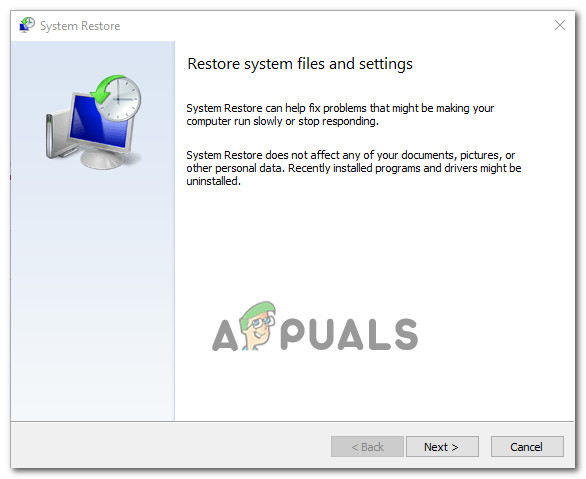
Getting past the initial screen of System Restore - Once you get to the next screen, start by checking the box associated with Show more restore points. Next, check the dates associated with each restore point and decide which one you’re going to use to restore your computer to a healthy state. When you’ve decided, select the appropriate restore point and click Next once again.
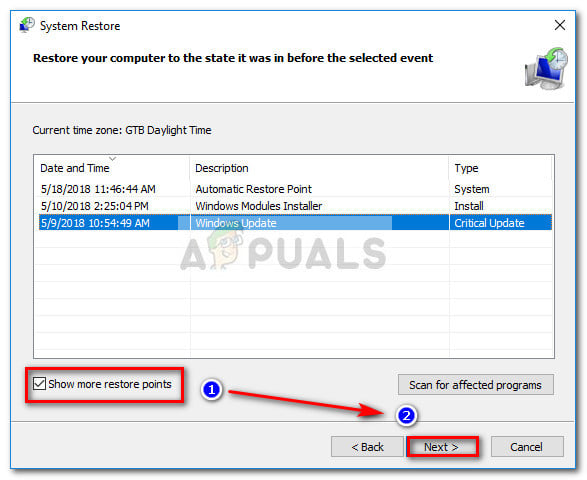
Enable Show more restore points box and click Next - Next, click on Finish to start the system restoring process. Immediately after you hit this button, your computer will restart and the older PC state will be mounted at the next system startup.
- When the next startup sequence is complete, restart your computer and see if the issue has been resolved.





